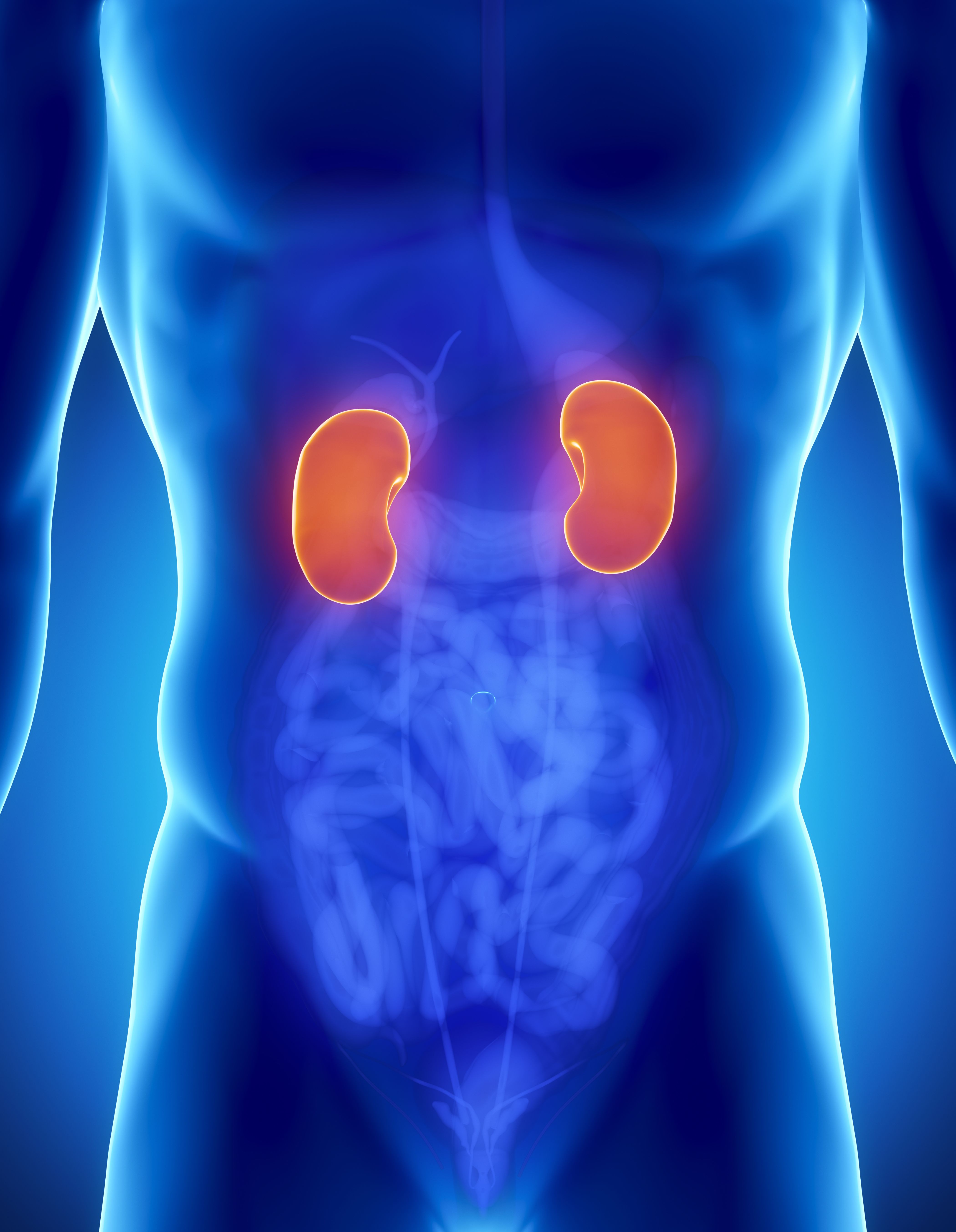Delays in All Organ Tumor Progression Observed in Lenvatinib/Pembrolizumab in Advanced RCC
“Our analysis showed that the time to progression was later with the use of lenvatinib and pembrolizumab compared with sunitinib,” said Viktor Grünwald, MD, PhD.
“Our analysis showed that the time to progression was later with the use of lenvatinib and pembrolizumab compared with sunitinib,” said Viktor Grünwald, MD, PhD.

Comparing lenvatinib (Lenvima) plus pembrolizumab (Keytruda) vs suntinib (Sutent) found delays in tumor progression in all organs for patients with advanced renal cell carcinoma (RCC), according to findings from an analysis of the phase 3 CLEAR trial (NCT02811861) presented at the 2024 American Society of Clinical Oncology (ASCO) Annual Meeting.1
Findings from the analysis showed that the time to disease progression was favorable for patients who received the combination vs sunitinib among those with tumors of the bone (HR, 0.40; 95% CI, 0.25-0.63), central nervous system (CNS; HR, 0.47; 95% CI, 0.19-1.19), kidney (HR, 0.65; 95% CI, 0.37-1.14), liver (HR, 0.52; 95% CI, 0.32-0.84), lung (HR, 0.48; 95% CI, 0.36-0.62), and lymph nodes (HR, 0.63; 95% CI, 0.46-0.85). The median time to disease progression was not estimable (NE; 95% CI, NE-NE) in both arms of the bone, CNS, kidney, and liver tumor organ groups. In the lung tumor group, the median time to disease progression was 47.9 months (95% CI, 43.3-NE) in the combination arm vs 16.6 months (95% CI, 11.1-24.0) in the sunitinib arm; in the lymph node tumor subgroup, the median time to disease progression was NE (95% CI, 41.6-NE) vs NE (95% CI, 24.0-NE), respectively.
“Our analysis showed that the time to progression was later with the use of lenvatinib and pembrolizumab compared with sunitinib,” Viktor Grünwald, MD, PhD, professor of Interdisciplinary Genitourinary Oncology at the University Hospital Essen in Germany, said during a presentation of the findings. “Also, when we look at the overall disease progression pattern, meaning the analysis of the tumor burden at the time of tumor progression, we [saw] a larger fraction of patients who had a larger change [regarding tumor burden of target lesions] with lenvatinib and pembrolizumab at the time of progression than with sunitinib.”
CLEAR enrolled adult patients with treatment-naive advanced clear cell RCC. Eligible patients needed to have measurable disease, adequate organ function, and a Karnofsky performance score of at least 70. The primary end point was progression-free survival (PFS) by RECIST 1.1 criteria. Secondary end points included objective response rate (ORR), overall survival (OS), and safety.1,2
Patients were randomly assigned 1:1:1 to receive lenvatinib 20 mg orally daily in 21-day cycles plus pembrolizumab 200 mg intravenously every 3 weeks on day 1 of each 21-day cycle, lenvatinib 18 mg orally daily plus oral everolimus (Afinitor) 5 mg daily, or sunitinib 50 mg orally daily for 4 weeks on and 2 weeks off.3
Data from the final prespecified OS analysis of CLEAR demonstrated that the median OS in the lenvatinib plus pembrolizumab arm was 53.7 months (95% CI, 48.7-NE) vs 54.3 months (95% CI, 40.9-NE) in the sunitinib arm (HR, 0.79; 95% CI, 0.63-0.99; nominal P = .0424). The median PFS was 23.9 months (95% CI, 20.8-27.7) vs 9.2 months (95% CI, 6.0-11.0), respectively (HR, 0.47; 95% CI, 0.38-0.57; P < .0001). The ORRs were 71.3% (95% CI, 66.6%-76.0%) vs 36.7% (95% CI, 31.7%-41.7%), respectively, including respective complete response rates of 18.3% vs 4.8%.
Additional findings from the patterns of progression analysis demonstrated that the median change in sums of targeted lesions vs baseline in all patients who received lenvatinib plus pembrolizumab (n = 355) and sunitinib (n = 357) was –48.1% vs –17.4%, respectively. At baseline, the median sum of target lesions was 56.7 mm (range, 10.0-348.3) for those who received the combination vs 56.7 mm (range, 10.6-357.9) for those who received sunitinib. At progression, the median sum of target lesions was 29.8 mm (range, 0.0-301.9) vs 42.8 mm (range, 0.0-313.4), respectively.
During survival follow-up, 181 patients in the combination arm received a subsequent anticancer medication compared with 246 patients in the sunitinib arm; the median time to treatment discontinuation was 10.6 months vs 10.9 months, respectively. Seventy patients in the combination arm received cabozantinib (Cabometyx) as the first subsequent anticancer agent during follow-up compared with 25 patients in the sunitinib arm; the median time to cabozantinib discontinuation among these patients was 13.2 months vs 7.1 months, respectively. Axitinib (Inlyta) was given as the first subsequent therapy during follow-up to 20 patients vs 14 patients in the respective arms; the median time to axitinib discontinuation among these patients was 23.7 months vs 12.6 months, respectively.
“In the second-line analysis [on] the use of axitinib or cabozantinib, it appears that patients who were previously exposed to treatment with lenvatinib plus pembrolizumab had a longer time on those therapies than the group of patients who received sunitinib,” Grünwald said in conclusion. “Overall, our results continue to support the use of lenvatinib and pembrolizumab as a current standard treatment option in the first-line treatment of [patients with] kidney cancer.”
References
- Grünwald V, Motzer RJ, Keizman D, et al. Lenvatinib plus pembrolizumab (L+P) vs sunitinib (S) in advanced renal cell carcinoma (aRCC): patterns of progression and subsequent therapy in the CLEAR trial. J Clin Oncol. 2024;42(suppl 16):4524. doi:10.1200/JCO.2024.42.16_suppl.4524
- Motzer RJ, Porta C, Eto M, et al. Lenvatinib plus pembrolizumab versus sunitinib in first-line treatment of advanced renal cell carcinoma: final prespecified overall survival analysis of CLEAR, a phase III study. J Clin Oncol. 2024;42(11):1222-1228. doi:10.1200/JCO.23.01569
- Lenvatinib/everolimus or lenvatinib/pembrolizumab versus sunitinib alone as treatment of advanced renal cell carcinoma (CLEAR). ClinicalTrials.gov. Updated July 10, 2023. Accessed June 4, 2024. https://classic.clinicaltrials.gov/ct2/show/NCT02811861
Newsletter
Stay up to date on recent advances in the multidisciplinary approach to cancer.